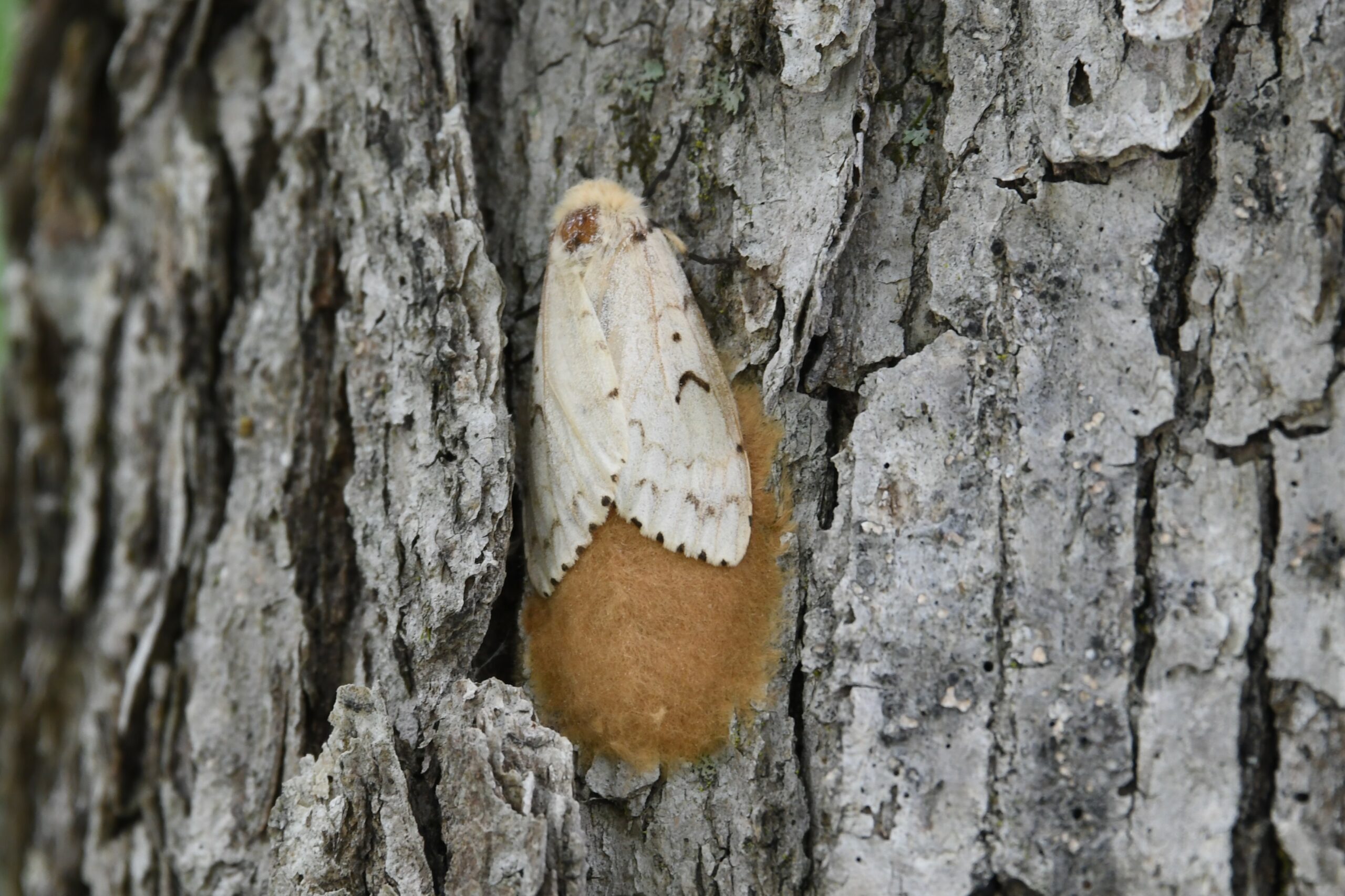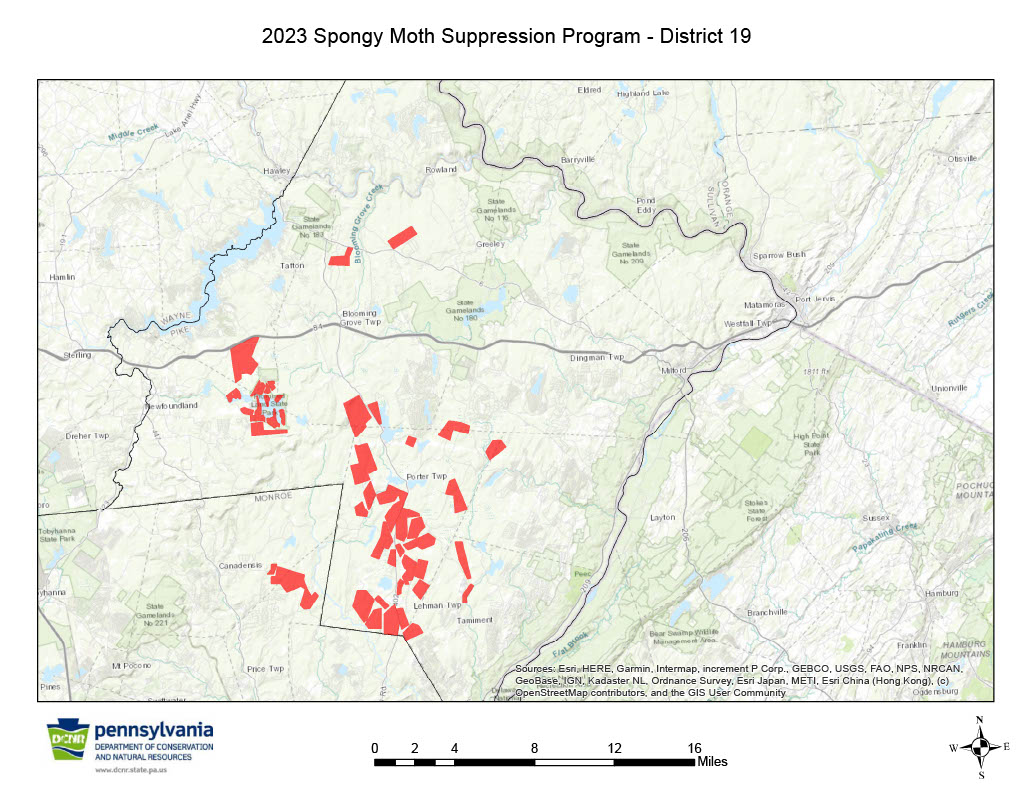
Spongy Moths (formerly Gypsy Moth)
Updated as of December 12, 2023
Spongy Moth (Lymantria dispar dispar) — formerly known as gypsy moth — is a destructive forest pest responsible for killing millions of oak and other trees across the state.
- Females lay their tan egg masses in June & July, which hatch the following year at the end of April to the beginning of May.
- Egg mass surveys are recommended for late summer to fall but can be done throughout winter.
- For foliar treatments, a week or two after hatch is the recommended treatment time depending on the insecticide being used.
In 2021, 2022, & 2023 there were high populations and heavy impacts in central & northcentral PA. The DCNR Bureau of Forestry has cited predicted heavy spongy moth defoliation once again in 2024 in the What Can We Do About the Spongy Moth Outbreak article in their Fall 2023 Bureau of Forestry Newsletter. While the high spongy moth populations of this "boom" in their "boom and bust cycle" is expected to end at some point, unpredictable factors like seasonal weather make it difficult to forecast.
Trees that lose their leaves to spongy moth defoliation are weakened and are more susceptible to other stressors like drought, but recent defoliation does not necessarily mean that a tree will die.
If you are interested in setting up your own private spray program, please refer to the links below:
Guide to Conducting a Private Spongy Moth Suppression Program provided by DCNR
Aerial Applicators Licensed to Work in Pennsylvania provided by DCNR
DCNR Service Forester to Each County provided by DCNR
Guide to Spongy Moth Egg Mass Surveying provided by Penn State Extension




Our community starts with you. Land use is decided at the local level in PA with citizens and government officials working together to identify what natural resources are important in each community.
Active citizens are essential. Get Involved! Effective planning cannot happen in a vacuum; it must be a reflection of community values. You Can Make a Difference »
